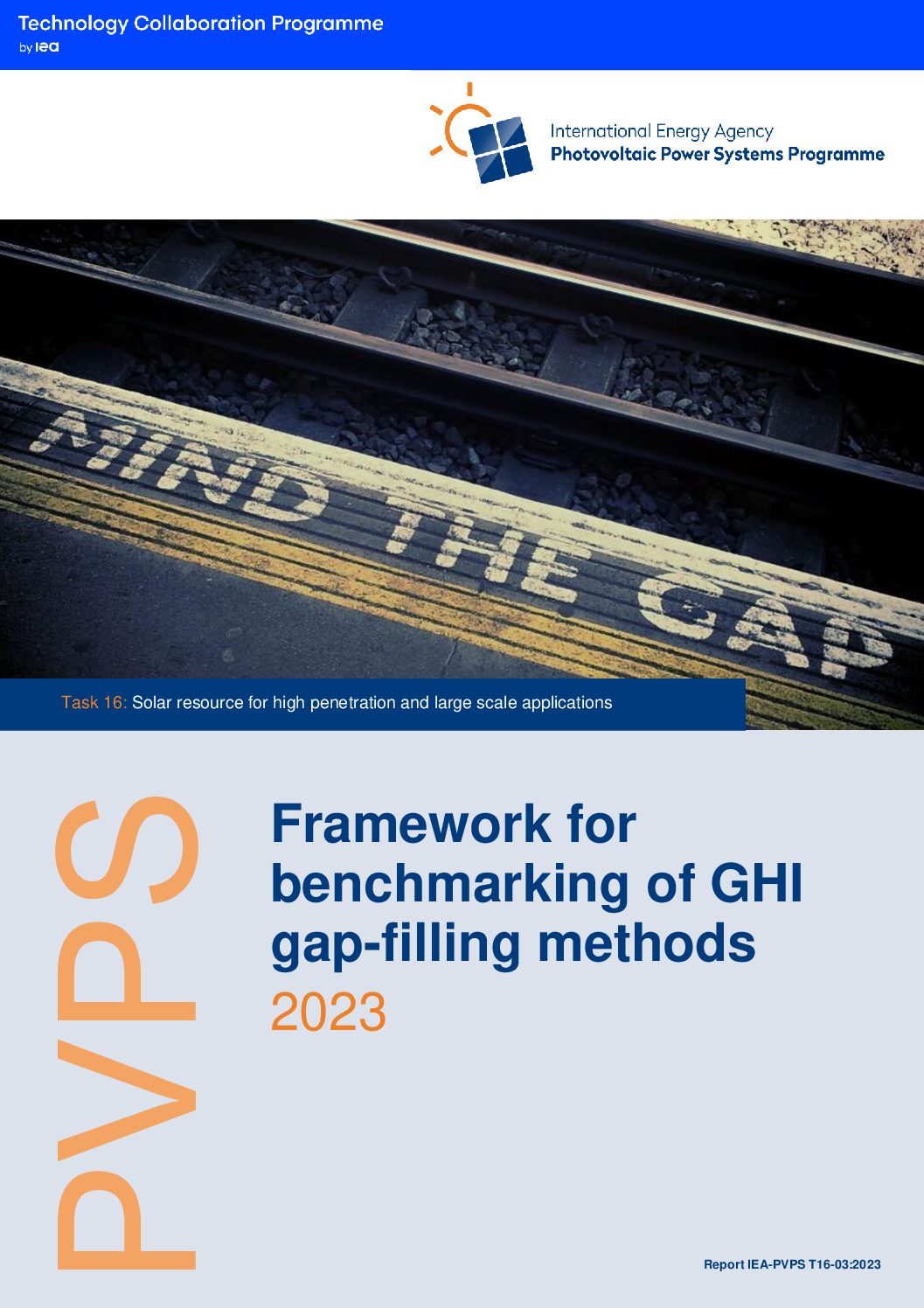An evermore accelerated deployment of photovoltaic (PV) capacity is expected worldwide and in-situ solar irradiance time series play a decisive in supporting such growth: not only they represent the foundation of solar resource assessment and forecasting, but they also drive prospective PV yield studies, can be used as a calibration reference when using satellite data, evaluating PV systems’ performance, or even developing forecasting algorithms.
However, such datasets inevitably have gaps (i.e., periods with missing data) – as a result of defaults during data-logging, sensor failures, among others, or from Quality Check (QC) procedures – that can compromise their applicability and value. An additional issue is that data gaps can be further enlarged when computing temporal aggregations, notably for intra-daily to daily, daily to monthly and yearly averages, thus further degrading the dataset.
This has raised the need for gap-filling (GF) methods that can post‑process either static historical datasets or more dynamic real-time data streams. Each case is characterised by different constraints, such as the access to data that follows a given data gap or the acceptable time lag for generating the replacement synthetic data.
And while, naturally, a given gap-filling method can be tested for a given location, such analyses are done in a very context-specific manner. Thus, this report aims to propose a GF benchmark framework, as well as evaluate a set of possible baseline algorithms for:
- The GF of intra-hourly time series of global horizontal irradiance. The results are exposed in this report only for time step of 15-min.
- The GF of the corresponding daily sums of irradiation in the presence of with intra-day gaps (DSG, daily sums with gaps) using two different approaches: (1) gap-filling the intra-day time series with the previous methods and (2) using directly the incomplete data with methods which are less sensitive to gaps.
It is also important to mention that while the focus is exclusively on:
- global horizontal irradiance (GHI), this report paves the way for potential future studies addressing global tilted irradiance (GTI) and PV time series,
- baseline gap-filling methods, this same benchmark framework can be used by anyone to evaluate more complex, e.g., machine-learning (ML-) based, approaches.
This report is the result of expert discussions during specific sessions of the subtask-2 activity 2.1 of the Task 16 of PVPS and during the dedicated workshop organised during the ICEM 2019 conference: “Workshop on best practices for automatic and expert-based data quality control methods and for gap filling methods”.
The main authors have identified the following 3 Key Takeaways from the report:
- In time series of radiation data gaps are existing.
- The report compares 5 different methods to fill gaps depending on the duration of the gap.
- For short gaps linear interpolation works best for longer duration the use of satellite data is best.
